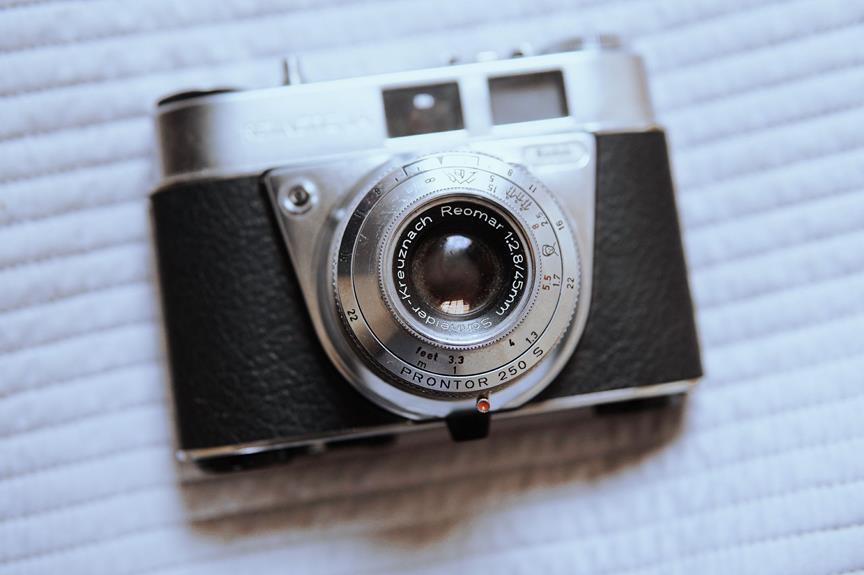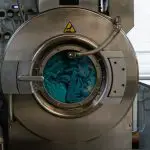Looking to find the most effective fabric glue for bonding plastic and metal materials?
This in-depth analysis will guide you through the top options, comparing their adhesion strength, drying time, and suitability for different materials.
Whether you're working on a DIY project or a professional repair job, mastering the best fabric glue for plastic and metal will ensure durable and long-lasting results.
Key Takeaways
- Different fabric glues are suitable for porous and non-porous materials, so it's important to select the right glue for specific materials.
- Adhesion strength of fabric glue on plastic and metal surfaces should be assessed, taking into consideration the surface type and flexibility of plastic, as well as the metal composition and environmental factors.
- Longevity and durability of fabric glue bonds are crucial, so it's important to look for fabric glues formulated for plastic and metal, and to consider manufacturer's specifications and user reviews.
- Material compatibility with plastic and metal surfaces should be evaluated, and surface preparation, such as roughening or using primers, can enhance the bond strength of fabric glue.
Types of Fabric Glues
You'll need to consider the specific properties and applications of different fabric glues before deciding which one works best on plastic and metal. When it comes to fabric glue types, there are several options to choose from, each with its own set of pros and cons. For example, some fabric glues are specifically designed for use on porous materials like fabric, while others are formulated to adhere to non-porous surfaces such as plastic and metal. It's important to select a fabric glue that's suitable for the specific materials you're working with to ensure a strong and durable bond.
One of the best application practices for fabric glue is to carefully read and follow the manufacturer's instructions. Different types of fabric glues may require different application methods, drying times, and curing processes. Additionally, it's essential to prepare the surfaces to be bonded by cleaning them thoroughly and ensuring they're free from any dust, grease, or other contaminants that could interfere with the adhesive bond.
Adhesion Strength Comparison
When it comes to fabric glue adhesion strength, you want to know how well it works on both plastic and metal surfaces. Understanding the long-lasting bonding power of different fabric glues can be crucial for your projects.
Additionally, the versatility of a fabric glue across various materials is an important factor to consider when comparing adhesion strength.
Plastic Vs. Metal Adhesion
To determine the adhesion strength between plastic and metal, test the fabric glues on both surfaces and compare the results.
When assessing plastic adhesion, consider the surface type, such as smooth or textured, as it can affect the bonding ability. Additionally, the flexibility of the plastic may impact the durability of the bond.
For metal adhesion, take into account the composition of the metal, as some fabric glues may work better on certain metals than others. It's also important to evaluate the environmental factors the bond will be subjected to, such as temperature and moisture, as these can influence the adhesion strength differently for plastic and metal surfaces.
Lastly, compare the adhesion strength of the fabric glues on both plastic and metal surfaces to determine the most effective option.
Long-lasting Bonding Power
For a thorough comparison of adhesion strength between fabric glues on plastic and metal surfaces, assess the longevity and durability of the bonds.
Long term durability is a crucial factor in determining the effectiveness of fabric glues on plastic and metal. When evaluating adhesive performance, consider the ability of the glue to maintain a strong bond over time, especially when exposed to various environmental factors.
Look for fabric glues that are specifically formulated to provide long-lasting adhesion on plastic and metal surfaces. Consider the manufacturer's specifications and user reviews to gauge the adhesive performance of each product.
Versatility Across Materials
When comparing fabric glues for their versatility across materials, assess their adhesion strength on plastic and metal surfaces using standardized testing methods. Understanding material compatibility is crucial for achieving optimal adhesion strength.
Consider the following when evaluating fabric glues for their versatility across materials:
- Material Compatibility:
- Look for fabric glues specifically formulated to bond with plastic and metal surfaces. These glues often contain adhesion promoters tailored to these materials.
- Consider the intended use of the bonded materials. Some fabric glues may excel in bonding certain types of plastic or metal, such as smooth or textured surfaces.
- Surface Preparation:
- Prior to applying fabric glue, ensure that the plastic and metal surfaces are clean and free from any contaminants that may hinder adhesion.
- Roughening the surfaces with sandpaper or using a primer designed for plastic and metal can enhance the bond strength.
Drying Time Evaluation
You'll find that the drying time for each fabric glue on plastic and metal varies significantly.
When evaluating the drying time of fabric glues, it's important to consider various factors such as temperature sensitivity, bonding flexibility, curing process, and environmental impact.
Some fabric glues may require specific temperature conditions for optimal drying, while others may offer more flexibility in bonding various materials.
Additionally, the curing process of the glue plays a crucial role in determining the drying time, as some glues may require a longer curing period before reaching their full adhesive strength.
It's also essential to consider the environmental impact of the glue's drying process, especially in terms of emissions and potential harm to the surroundings.
Understanding the drying time of fabric glues on plastic and metal enables you to make informed decisions based on your specific project needs, ensuring that you achieve the desired results within the expected timeframe.
Suitability for Plastic Materials
Opt for fabric glues that demonstrate exceptional adhesion to plastic materials, ensuring a reliable bond for your projects. When considering the suitability of fabric glue for plastic materials, several factors come into play that can affect the effectiveness of the adhesive. Here are key points to consider:
- Plastic compatibility:
- Look for fabric glues specifically formulated to bond with various types of plastics such as PVC, acrylic, polycarbonate, and ABS. These glues are designed to create a strong and lasting bond without damaging the plastic surface.
- Consider the flexibility of the glue once cured, as plastics can often require adhesives that can withstand movement and stress without cracking or weakening the bond.
- Application methods:
- Check for fabric glues that offer easy application on plastic surfaces, whether through squeeze tubes, precision tips, or spray application. The method of application can impact the coverage and overall effectiveness of the glue on plastic materials.
- Consider the drying time of the fabric glue, as some plastics may require longer curing times for the adhesive to fully set and create a durable bond.
Suitability for Metal Materials
When considering fabric glue for metal materials, it's crucial to assess its adhesion to metal surfaces and its impact on metal durability.
Understanding how well the glue adheres to metal and its effect on the longevity of the material is essential for choosing the right fabric glue for your project.
These points will help you make an informed decision and achieve the best results when working with fabric and metal.
Adhesion to Metal Surfaces
When selecting a fabric glue for metal materials, it's important to consider its adhesion to metal surfaces. To ensure the suitability for metal materials, you should consider the following:
- Metal Surface Preparation: Look for fabric glues that are compatible with the specific preparation methods for metal surfaces, such as cleaning, sanding, or priming. This will help to ensure a strong bond between the fabric and the metal.
- Compatibility with Different Metals: Consider the type of metal you're working with and choose a fabric glue that's known to adhere well to that specific metal. Different metals may require different adhesives for optimal adhesion.
- Long-term Durability: Evaluate the fabric glue's ability to withstand environmental factors such as temperature changes, moisture, and corrosion, to ensure a long-lasting bond with the metal surface.
Considering these factors will help you select a fabric glue that provides strong and lasting adhesion to metal surfaces.
Impact on Metal Durability
To ensure the suitability of fabric glue for metal materials, consider its impact on the durability of the metal surface.
When evaluating fabric glue for use on metal, it's crucial to assess its impact on the durability factors of the metal, such as resistance to environmental impact.
The chosen fabric glue shouldn't only provide strong adhesion to the metal surface but also contribute to its long-term durability.
Factors to consider include the glue's resistance to moisture, temperature variations, and exposure to chemicals, as these can significantly impact the metal's longevity.
Additionally, the environmental impact of the fabric glue on the metal surface should be taken into account to ensure that it doesn't cause corrosion or degradation over time.
Selecting a fabric glue that enhances the durability of metal surfaces will help maintain the integrity of the materials in various environmental conditions.
Application Techniques
For the best results, apply the fabric glue directly onto the plastic or metal surface. When applying fabric glue on plastic and metal, using the proper technique is crucial for achieving a strong and durable bond. Here are some technique variations to consider:
- Clean the surface: Before applying the fabric glue, ensure that the plastic or metal surface is thoroughly cleaned and free from any dust, grease, or debris. This will help the glue adhere more effectively.
- Use the right amount of glue: Apply a thin, even layer of fabric glue onto the surface. Avoid using too much glue as it can create a messy application and may take longer to dry.
- Apply pressure: Once the fabric glue is applied, firmly press the fabric or material onto the plastic or metal surface. Applying pressure helps to ensure maximum contact and bonding between the materials.
Durability and Longevity
You need a strong adhesive that can withstand wear and tear when bonding fabric to plastic and metal surfaces. When it comes to durability and longevity, it's crucial to consider how well the fabric glue holds up over time.
Different fabric glues have varying levels of durability, and it's essential to compare them to ensure you're selecting the most suitable one for your project.
Additionally, material compatibility plays a significant role in determining the longevity of the bond. Some fabric glues may work better on certain types of plastic or metal, so it's important to choose an adhesive that's compatible with the specific materials you're working with.
By considering the durability comparison and material compatibility, you can ensure that the fabric glue you select will create a long-lasting bond between fabric, plastic, and metal.
Ultimately, a durable fabric glue that's compatible with the materials you're bonding will provide a reliable and long-lasting hold, ensuring the longevity of your project.
User-Friendly Features
When selecting a fabric glue for bonding plastic and metal, consider the user-friendliness of the adhesive's application process. The user experience with the application methods can significantly impact the effectiveness of the glue and the ease of use.
Here are some key user-friendly features to consider:
- Precision Applicator: Look for fabric glues that come with precision applicators, such as fine tips or nozzles, to allow for accurate and controlled application, especially when working with small or intricate plastic and metal pieces.
- Quick Drying: Opt for a fabric glue that offers a quick-drying feature, as this can enhance the user experience by reducing the wait time and allowing for efficient bonding of plastic and metal materials.
- Minimal Mess: Choose a fabric glue that's designed to minimize mess during application, such as those with non-drip formulas or easy-to-clean applicator tips, to ensure a more pleasant and hassle-free application process.
Considering these user-friendly features in the application process can greatly improve your experience when using fabric glue for bonding plastic and metal, making the task more convenient and efficient.
Frequently Asked Questions
Can Fabric Glue Be Used on Both Plastic and Metal Materials, or Is There a Specific Type of Glue for Each Material?
Fabric glue compatibility with plastic and metal varies. Some fabric glues work on both materials due to their strong adhesive strength. However, for optimal results, it's recommended to use specific fabric glues designed for plastic and metal.
Are There Any Special Considerations or Preparations Needed When Using Fabric Glue on Plastic or Metal Surfaces?
When using fabric glue on plastic or metal, it's important to prepare the surfaces properly. Ensure the glue is compatible with the materials, follow safety measures, and consider the bonding effectiveness for a successful outcome.
Can Fabric Glue Withstand Outdoor or High-Temperature Exposure When Used on Plastic or Metal?
Yes, fabric glue can withstand outdoor exposure and high temperatures when used on plastic or metal. Look for a glue specifically designed for outdoor durability and temperature resistance to ensure the best results.
Is There a Specific Fabric Glue That Works Best for Bonding Different Types of Fabrics to Plastic or Metal Surfaces?
When choosing the best fabric glues for adhesion on plastic and metal surfaces, consider factors such as compatibility, strength, and durability. Look for options designed specifically for these materials to ensure optimal bonding results.
Are There Any Safety Precautions or Tips to Keep in Mind When Using Fabric Glue on Plastic or Metal Materials?
When using fabric glue on plastic or metal, always follow safety precautions like wearing gloves and working in a well-ventilated area. Apply a thin, even layer of glue and allow proper drying time for best results.
- Jaclyn Smith Fabric Coconut: a Review of This Rayon/Polyester Blend - June 29, 2025
- Jaclyn Smith Fabric Coconut: a Review of This Rayon/Polyester Blend - June 29, 2025
- How to Get Coconut Oil off Fabric Without Washing - June 29, 2025







